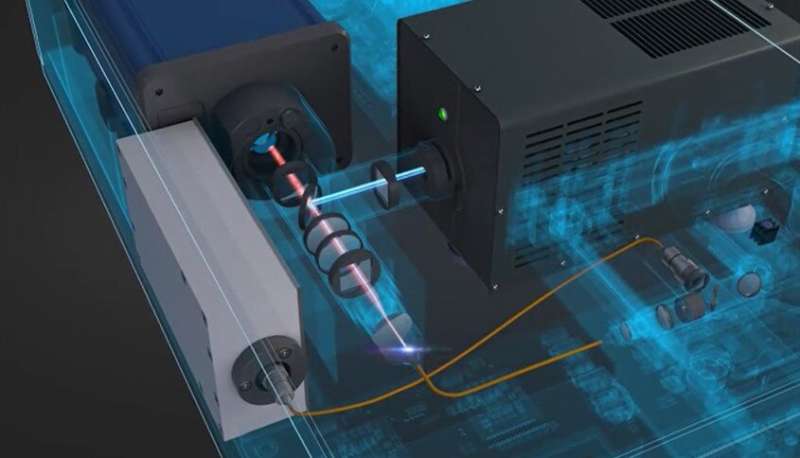
The total amount of data
generated worldwide is expected to reach 175 zettabytes (1 ZB equals 1 billion
terabytes) by 2025. If 175 ZB were stored on Blu-ray disks, the stack would be
23 times the distance to the moon. There is an urgent need to develop storage
technologies that can accommodate this enormous amount of data.
The demand to store ever-increasing volumes of information has resulted in the widespread implementation of data centers for Big Data. These centers consume massive amounts of energy (about 3% of global electricity supply) and rely on magnetization-based hard disk drives with limited storage capacity (up to 2 TB per disk) and lifespan (three to five years). Laser-enabled optical data storage is a promising and cost-effective alternative for meeting this unprecedented demand. However, the diffractive nature of light has limited the size to which bits can be scaled, and as a result, the storage capacity of optical disks.
Researchers at USST, RMIT and NUS have now overcome this limitation by using earth-rich lanthanide-doped upconversion nanoparticles and graphene oxide flakes. This unique material platform enables low-power optical writing nanoscale information bits.
A much-improved data density can be achieved for an estimated storage capacity of 700 TB on a 12-cm optical disk, comparable to a storage capacity of 28,000 Blu-ray disks. Furthermore, the technology uses inexpensive continuous-wave lasers, reducing operating costs compared to traditional optical writing techniques using expensive and bulky pulsed lasers.
This technology also offers the potential for optical lithography of nanostructures in carbon-based chips under development for next-generation nanophotonic devices.
The impact
Optical data storage has advanced remarkably in recent decades, but the optical disk storage capacity is still limited to a few terabytes.
The new sub-diffraction optical writing technology can produce an optical disk with the largest storage capacity of all available optical devices. While advances are needed to optimize the technology, the results open new avenues to address the global challenge of data storage. The technology is suited to the mass production of optical disks and could offer a cheaper and more sustainable solution for the next generation of high-capacity optical data storage and the energy-efficient nanofabrication of flexible graphene based electronics.
How it works
The technology uses a new nanocomposite material that combines graphene oxide flakes with upconversion nanoparticles.
Graphene oxide can be seen as a single layer of graphite with different oxygen groups. Reducing graphene oxide by eliminating these oxygen groups produces a material called reduced graphene oxide, which has similar properties to graphene.
Sub-diffraction information bits have been written in the nanocomposite using upconversion nanoparticles to reduce graphene oxide locally upon engineered illumination. The reduction of graphene oxide was induced by high-energy quanta generated in the excited upconversion nanoparticles through a process of resonance energy transfer.
The researchers chose upconversion nanoparticles because they enable efficient sub-diffraction optical writing using low laser beam intensity, resulting in low energy consumption and long lifetime of optical devices.

 Previous page
Previous page Back to top
Back to top







